For the nearly two-thirds of Ukrainians who identify as Orthodox Christians, Easter is known as Velykden, meaning “Great Day” in Ukrainian. This year, it is celebrated on Sunday, April 20.
The Orthodox Church of Ukraine calculates the date of Easter according to the revised Julian calendar. It falls on the first Sunday after the first full moon after the spring equinox — one of the two moments per year where the day and night are of equal length.
At the center of the week-long preparations is the Easter basket, known as sviachene meaning “that which is blessed.”

The Orthodox Easter basket is far from its Western counterpart, which usually features chocolate bunny rabbits and candy-filled plastic eggs. In this part of the world, it is filled with rich, symbolic foods that many Ukrainians abstain from over the 40 days of Lenten fasting that lead up to Easter.
The celebration begins with a blessing of the basket by a priest before families return home from mass to start the feast.
Here are six essential elements of a Ukrainian Easter basket, none of which are chocolate.
Paska (Easter Bread)
Paska, derived from Pesach or Passover in Hebrew, is a labor-intensive, mildly sweet bread made from milk, butter, eggs, flour, yeast, and sugar. The dough is allowed to rise three times before baking. Folklore suggests that the kitchen should remain very quiet while it is baking to prevent a collapsed loaf and a ruined Easter.
The preference for yeast bread can be traced back to the Great Schism between the Orthodox and Catholic churches during the time of the Kyivan Rus. The Catholic church continued to use the Old Testament custom of unleavened bread for communion, while the Orthodox church moved to leavened bread to symbolize the Risen Christ.
The Easter bread is often finished with egg wash or a powdered sugar glaze. A candle is placed in the center of the bread and lit during the blessing procession over the baskets.
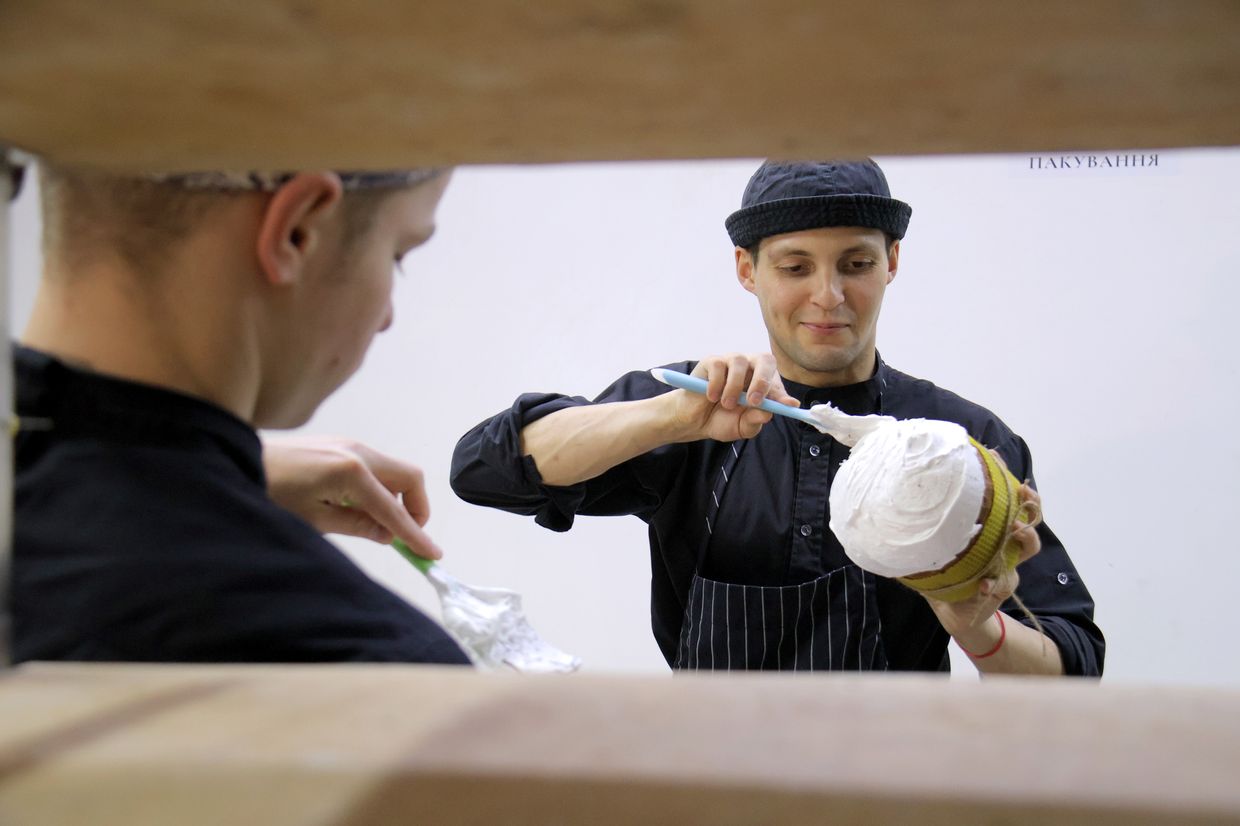

Pysanky (decorated eggs)
The most common eggs for Easter are called krashanky (from the verb “to beautify”) and pysanky (from “to write”), depending on how they are decorated.
Krashanky are hard-boiled eggs dyed a single color. The most traditional color is a deep red dyed with yellow onion skins. These are meant to match the egg Mary Magdalene is often depicted with in icons. However, in modern baskets, eggs are prepared in every color chemically possible.
Many households begin the feast with a game called navbytky, which roughly translates to ‘egg tapping.’ Using krashanky eggs, one player holds their egg still with the pointed end out, while the other taps their pointed end against it. The player whose egg cracks is the loser.
Pysanky are the more internationally recognized version of Ukrainian Easter eggs. Raw eggs are hollowed through a pinhole and complex patterns are “written” onto the egg with a stylus which is then dyed using a wax-resist method.
Different colors and shapes used in pysanky are symbolic, with meanings that have changed over time and by region since the practice started in pre-Christian times.
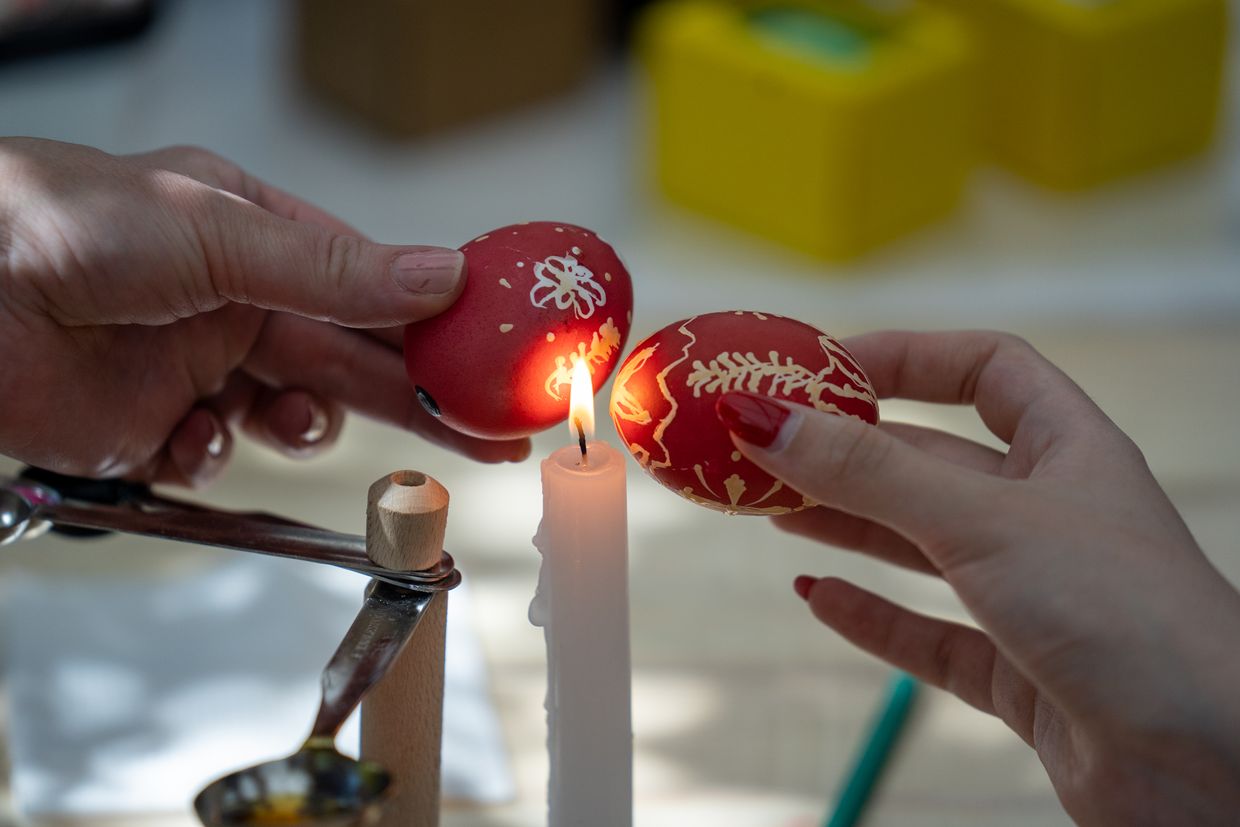
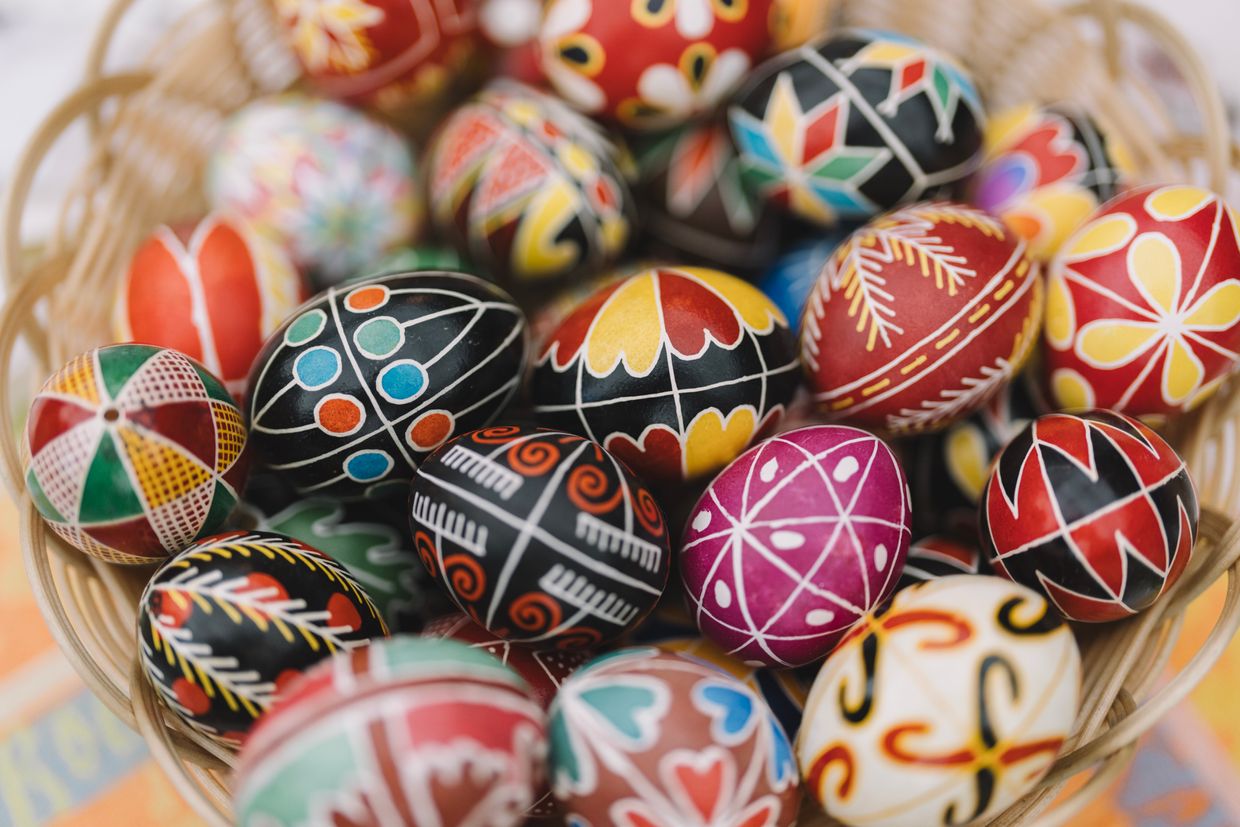
Dairy
The week leading up to Lent is often referred to as Mardi Gras in the West. In Ukraine, it is known as maslyana, or butter week. For observers of the Lenten fast it is a week to indulge in rich, egg, cheese, and butter-filled pancakes and pastries that will be absent during Lent.
To celebrate the end of the fast, the Ukrainian Easter basket includes butter and sometimes semi-hard cheeses.
A cheesecake-like dessert called syrnyk is made from soft, fresh farmer’s cheese, butter, egg yolks, sugar, and vanilla. The mixture is pressed into a mold and dried fruits and nuts are used to decorate the dessert with religious symbols.

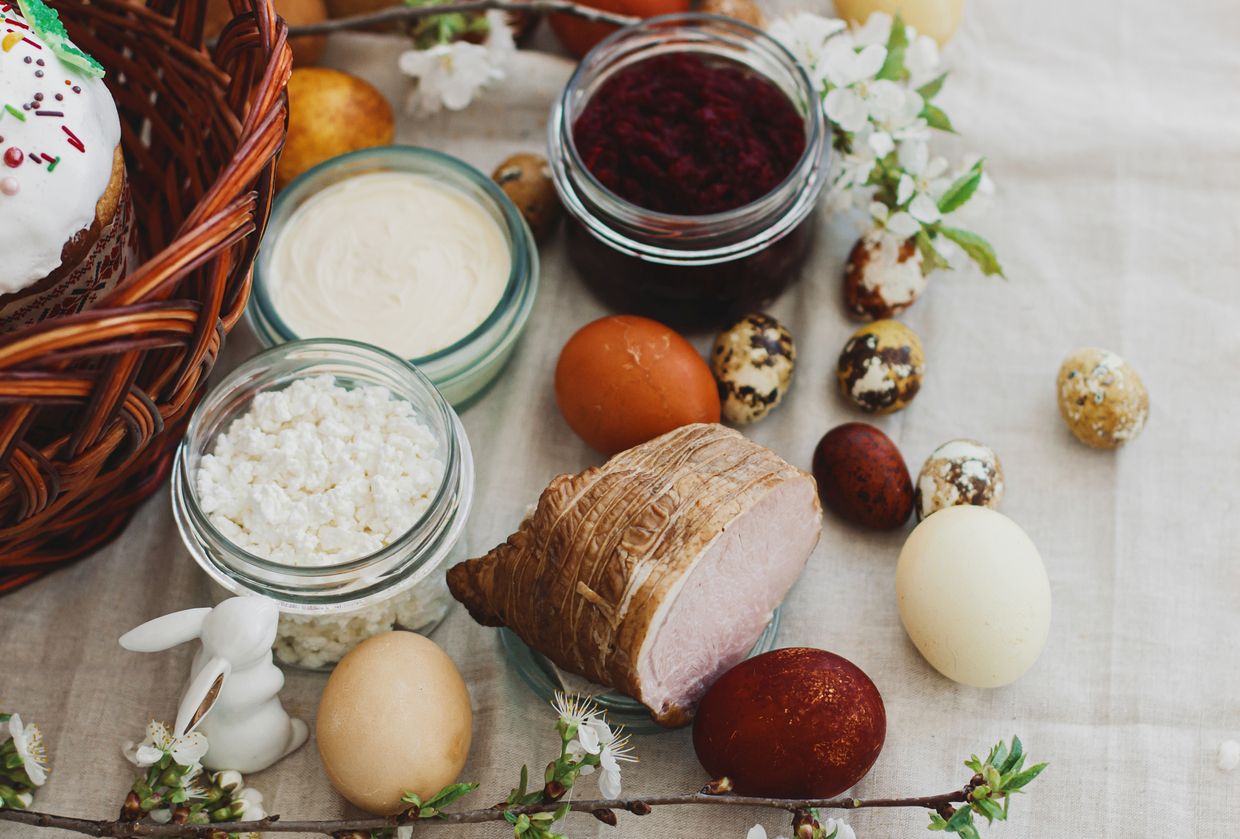
Cured Meats
The next essential item in the basket is cured meats. Roasted piglets were once a common feature in Easter baskets, but by the early 1900s, this was too expensive for most families.
Modern Easter baskets tend to include ham, smoked sausages, and salo — cold, white pork fat. Ham is thought to represent the joy and abundance of Easter, smoked sausage God’s generosity, and salo God’s mercy.
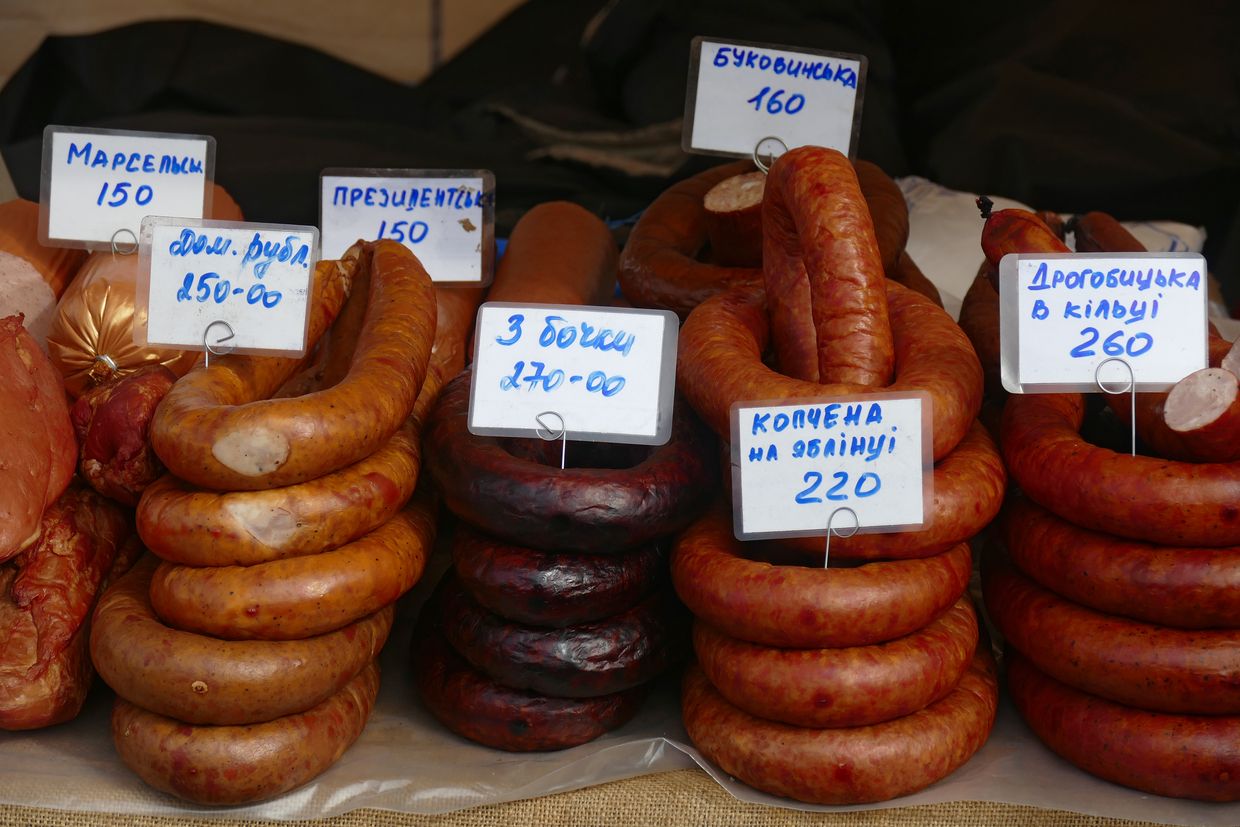
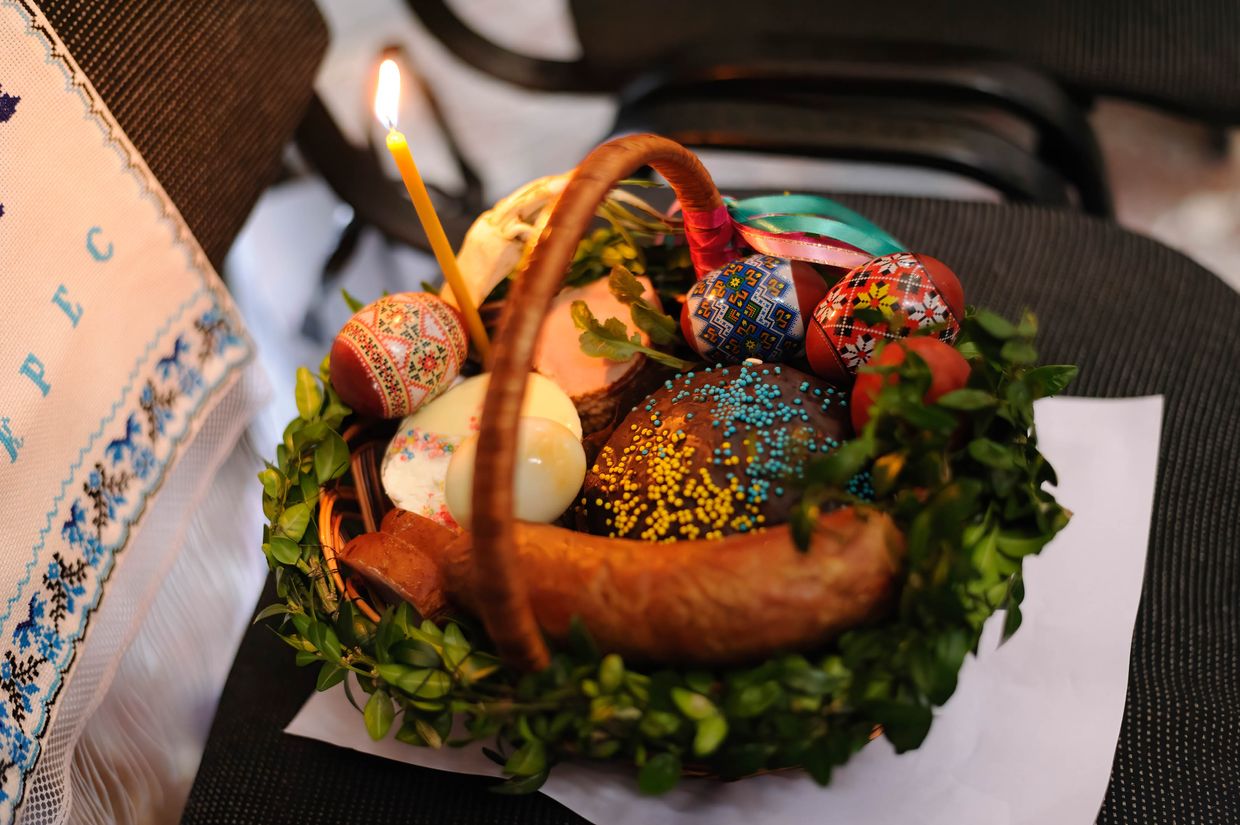
Horseradish
Horseradish relish, sometimes mixed with beets, is another common ingredient in the basket to compliment the rich meats of the feast. Its strong, biting flavor is thought to remind Ukrainians of the bitterness of Christ’s suffering before the Resurrection on Easter day.
Salt
Salt has traditionally been a symbol of prosperity in Ukraine. For Easter, it further signifies purification and the duty of Christians to others. After the start of the full-scale Russian invasion, salt also became a symbol of Ukrainian endurance during the battle of Soledar.
In April 2022 the state-owned Artemsil salt mine in the eastern town of Soledar halted production for the first time since World War II due to ongoing attacks by Russian forces. Situated 18 kilometers north of Bakhmut, the mine had been in operation since 1881, produced 90% of Ukraine’s salt, and exported it to another 20 countries.
Fighting intensified in and around Bakhmut in August 2022 and by January 2023 Soledar was largely flattened and held by Russian forces. During the war, many Ukrainians will be filling their Easter baskets with foreign salt and the hope of victory in their homeland.















